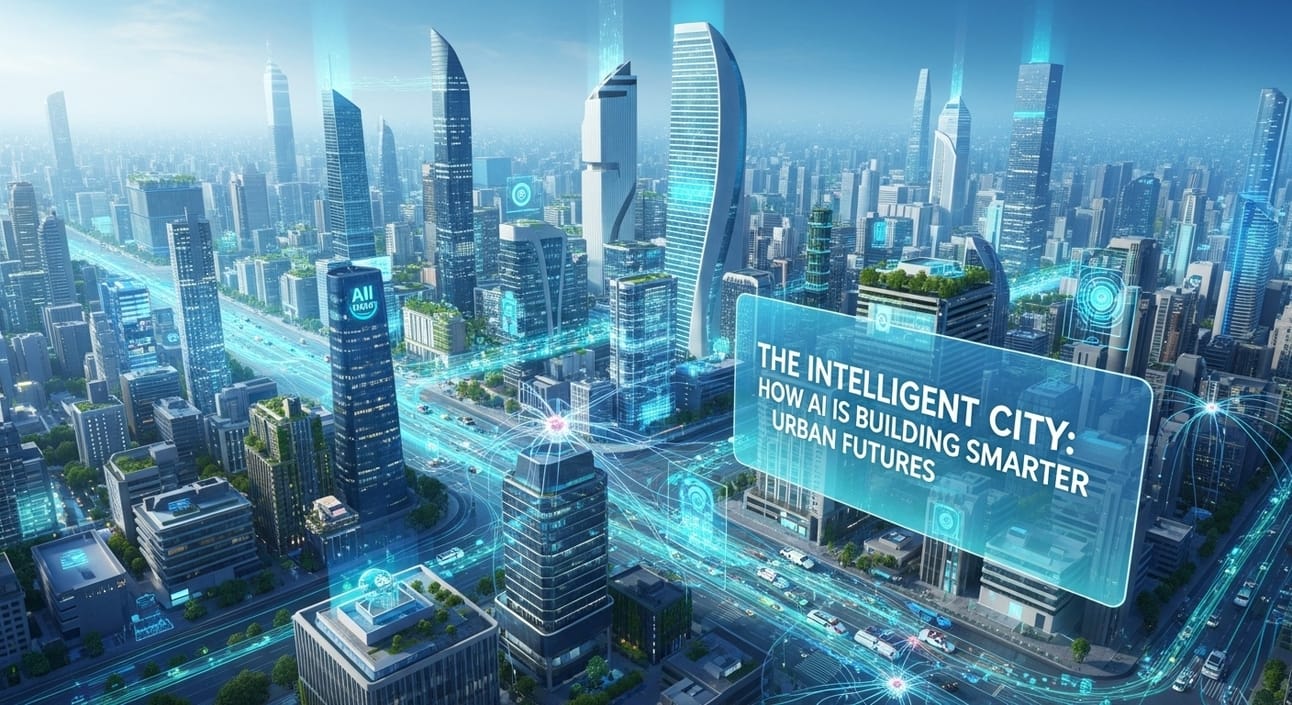- Digital Brain
- Posts
- The Intelligent City: How AI is Building Smarter Urban Futures
The Intelligent City: How AI is Building Smarter Urban Futures

Hello, Digital Brain reader!
We've journeyed through the vast landscapes of AI, from its creative applications and ethical considerations to its role in the Metaverse. Today, let's zoom in on a tangible application that directly impacts millions: the transformation of our urban environments. Artificial Intelligence is rapidly becoming the central nervous system of "smart cities," optimizing everything from traffic flow to energy consumption and public safety. How is your "Digital Brain" adapting to life in an increasingly intelligent urban landscape?
What Makes a City "Smart" with AI?
A smart city leverages technology, particularly AI, to improve the quality of life for its residents, enhance operational efficiency, and promote sustainability. It's about collecting vast amounts of data from sensors, cameras, and connected devices, and then using AI to analyze this data, identify patterns, and make intelligent, real-time decisions.
Here’s how AI is building smarter urban futures:
Optimizing Traffic and Transportation:
Intelligent Traffic Lights: AI analyzes real-time traffic conditions, pedestrian movement, and even weather patterns to dynamically adjust traffic light timings, reducing congestion and travel times.
Public Transport Optimization: AI predicts demand for buses and trains, optimizes routes, and manages schedules to improve efficiency and reduce wait times.
Autonomous Vehicles: While still evolving, AI-powered self-driving cars and public transport systems promise to revolutionize urban mobility, making it safer and more efficient.
Energy Management and Sustainability:
Smart Grids: AI predicts energy demand and supply, integrates renewable energy sources, and optimizes energy distribution, leading to reduced waste and lower carbon emissions.
Building Automation: AI-powered systems manage lighting, heating, and cooling in commercial and residential buildings, significantly cutting energy consumption.
Waste Management: AI can optimize waste collection routes, identify overflowing bins, and even sort recyclable materials, making waste management more efficient and environmentally friendly.
Public Safety and Emergency Response:
Predictive Policing: AI analyzes crime data to identify patterns and predict potential hotspots, allowing law enforcement to deploy resources more effectively. (This application raises significant ethical concerns regarding bias and surveillance, which must be carefully addressed).
Emergency Response: AI can optimize the dispatch of emergency services (ambulances, fire trucks) by analyzing traffic and incident data, ensuring faster response times.
Disaster Preparedness: AI models can simulate disaster scenarios and predict their impact, helping cities prepare and respond more effectively to natural calamities.
Urban Planning and Infrastructure Maintenance:
Predictive Maintenance: AI analyzes data from sensors on bridges, roads, and utilities to predict when infrastructure components might fail, allowing for proactive repairs and preventing costly disruptions.
Urban Growth Modeling: AI can simulate the impact of new developments on traffic, resources, and services, assisting urban planners in making informed decisions.
Environmental Monitoring: AI-powered sensors monitor air and water quality, noise levels, and other environmental factors, providing data for public health initiatives and regulatory compliance.
Challenges and the Human-Centric Approach
While the vision of intelligent cities is compelling, several challenges must be addressed:
Data Privacy and Surveillance: The collection of vast amounts of citizen data raises significant privacy concerns. Robust regulations and transparent data governance are crucial.
Digital Divide and Equity: Ensuring that the benefits of smart city technologies are accessible to all residents, regardless of socioeconomic status, is vital to prevent exacerbating existing inequalities.
Cybersecurity Risks: Smart city infrastructure is a prime target for cyberattacks, making robust security measures paramount.
Cost and Implementation: The initial investment in smart city technologies can be substantial, requiring strong public-private partnerships.
Human-Centric Design: Technology should serve people, not the other way around. Smart cities must be designed with citizen needs and well-being at their core, ensuring they remain livable, inclusive, and vibrant.
The "Digital Brain" is no longer confined to our devices; it's becoming embedded in the very fabric of our urban environments. As our cities become smarter, the interplay between technology, governance, and human experience will define the quality of our future lives.
Stay connected, stay aware, and see you in the next edition!
Sincerely,
The Digital Brain Team